These delicious pan-seared salmon steaks are made with fish seared in butter and oil, and then served with a lemon and caper pan sauce.
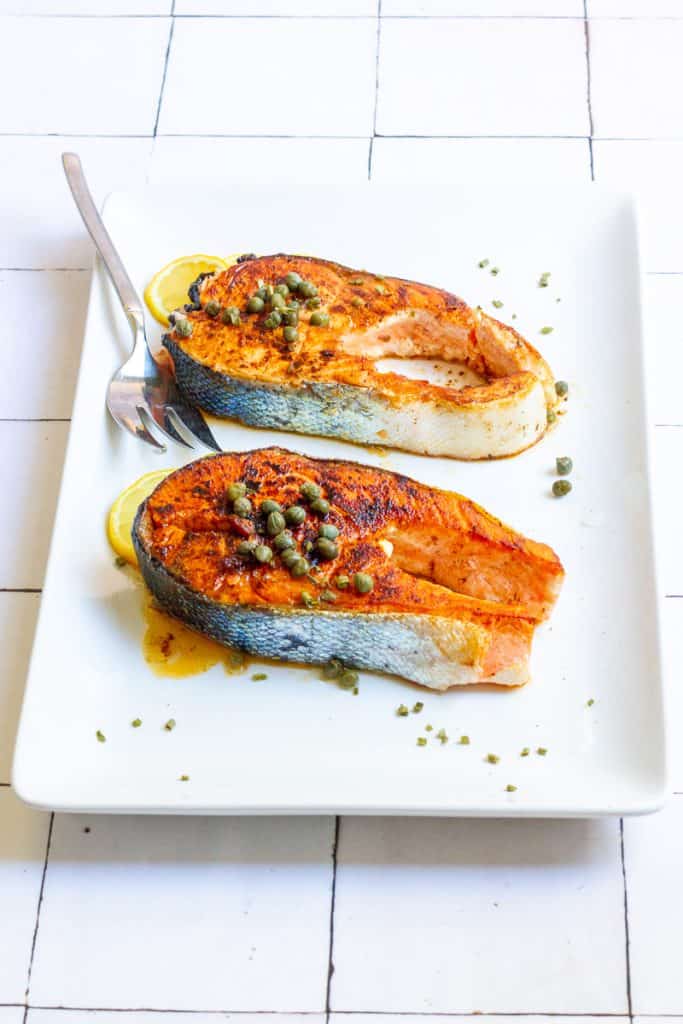
Salmon steaks — have you managed to get your hands on some?
They're a little hard to find, so you're in for a treat if you've got some on the menu!
One of my favorite ways to enjoy salmon is pan-seared and topped with a buttery lemon sauce. It's a recipe inspired by Julia Child's famous fish meunière, and translates deliciously to a variety of types of fish.
In fact, if you have salmon fillets (instead of steaks), you can make this salmon meuniére and enjoy the same flavors.
But if you've landed some salmon steaks and want to really let them shine, read on for tips on how to get the best results!
How Do I Debone Salmon Steaks?
If you haven't cooked salmon steaks before, you might not realize that there are a couple of extra steps involved.
It was news to me when I first tried them!
You'll need to remove the bones and membrane. Although it adds a few minutes to preparation time, it's not hard! Learn how to debone salmon steaks in this tutorial.
Should I Roll the Salmon Steaks?
After you debone the salmon steaks, you have the option of either rolling them up into little medallions, or leaving them unrolled.
It depends on whether you want the steaks to be easier to flip, or easier to watch while they cook.
If you roll the salmon, it will be easier to flip. However, I prefer to leave the steaks unrolled for this recipe, because it's easier to watch them cook.
If they're rolled up, you'll just see the skin, top and bottom. But you can always use a meat thermometer if you go that route.
Want more salmon ideas? Try salmon broccoli pasta or pan-seared salmon with lemon risotto, or broiled salmon steaks with teriyaki sauce!
Do I Need To Use Clarified Butter?
Traditional fish meuniére, which this recipe is based on, uses clarified butter.
I don't usually have clarified butter on hand, so I use a shortcut described in the book Julia's Kitchen Wisdom.
Simply use a mixture of regular (non-clarified) butter and oil. It's surprisingly effective and keeps the butter from browning too quickly.
If you do want to make your own clarified butter, I like this tutorial from Serious Eats!
How to Make Pan-Seared Salmon Steaks
Start with deboned salmon steaks, and pat them dry. Sprinkle both sides with salt, pepper and paprika.
Let them come to room temperature so they'll be easier to sear. About 15 minutes should do it.
In a heavy pan, heat butter and olive oil. Then place the salmon steaks in the pan.
I like this Lodge 12" carbon steel skillet for cooking fish.
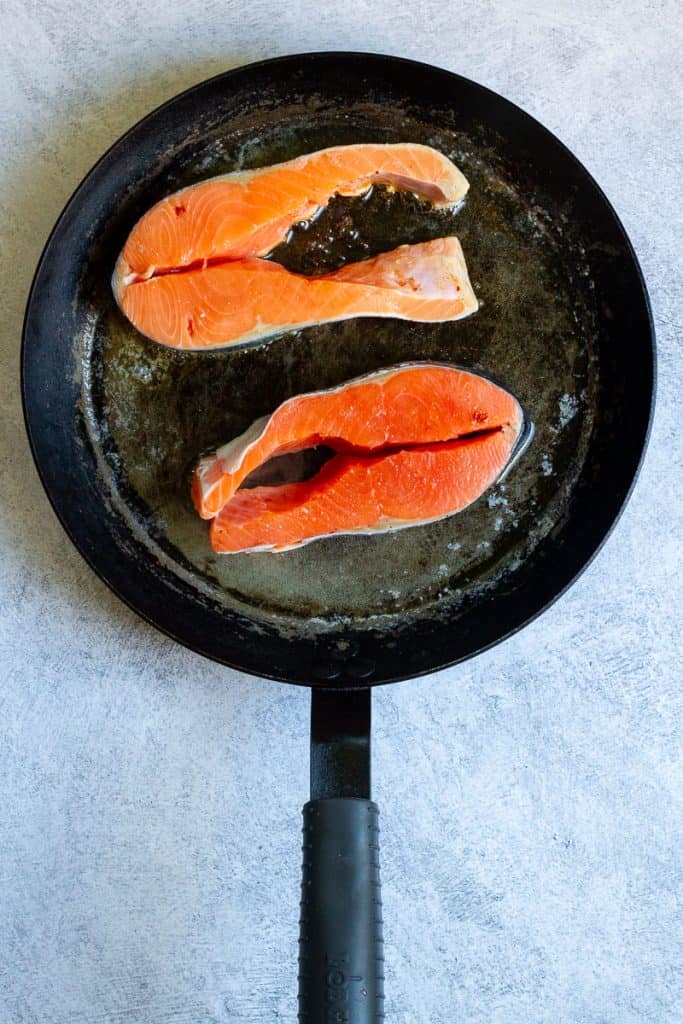
Cook the salmon for 3-4 minutes.
If you've left the steaks unrolled, it will be easier to watch as they turn opaque from cooking.
When they appear about halfway cooked, test them with a thin metal spatula.
I use the Wusthof fish spatula, but a lot of people also like this OXO fish spatula too.
If they release easily from the bottom of the pan, flip them. If they stick, let them cook a little longer.
After flipping the steaks, cook them for another 2-4 minutes. Exact cooking time will vary depending on the thickness of the fish, so just be watchful.
They are done cooking when fully opaque in the center.
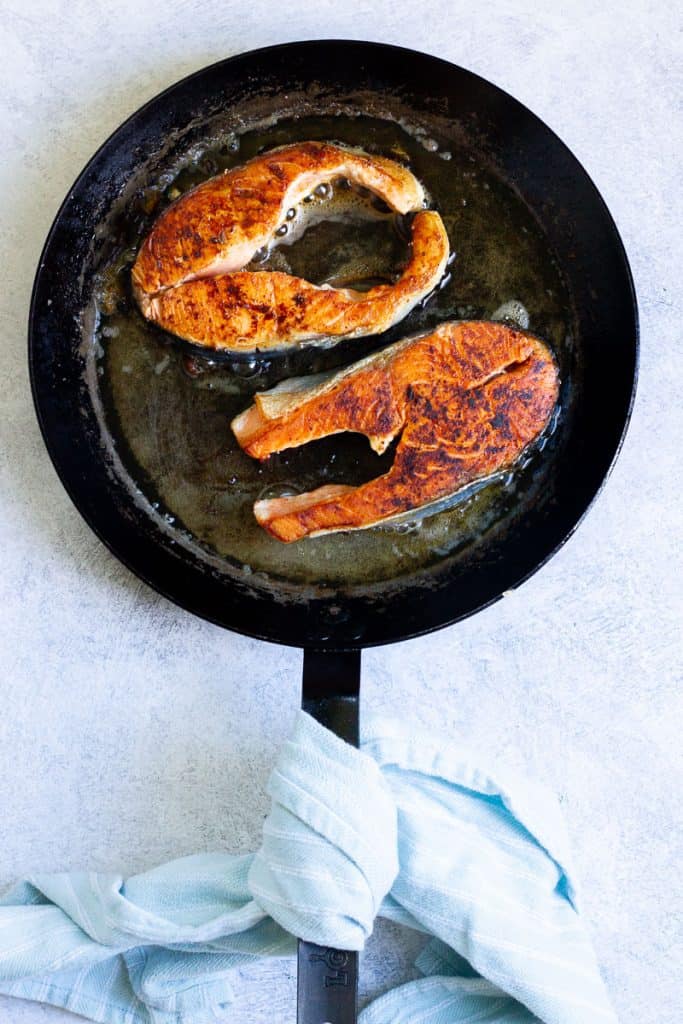
Transfer the fish to plates, leaving excess butter in the pan. Keep plates covered or warmed for the next few minutes until you finish making the sauce.
Reduce the heat, and add lemon juice and capers to the pan. Stir and let the mixture reduce for about a minute.
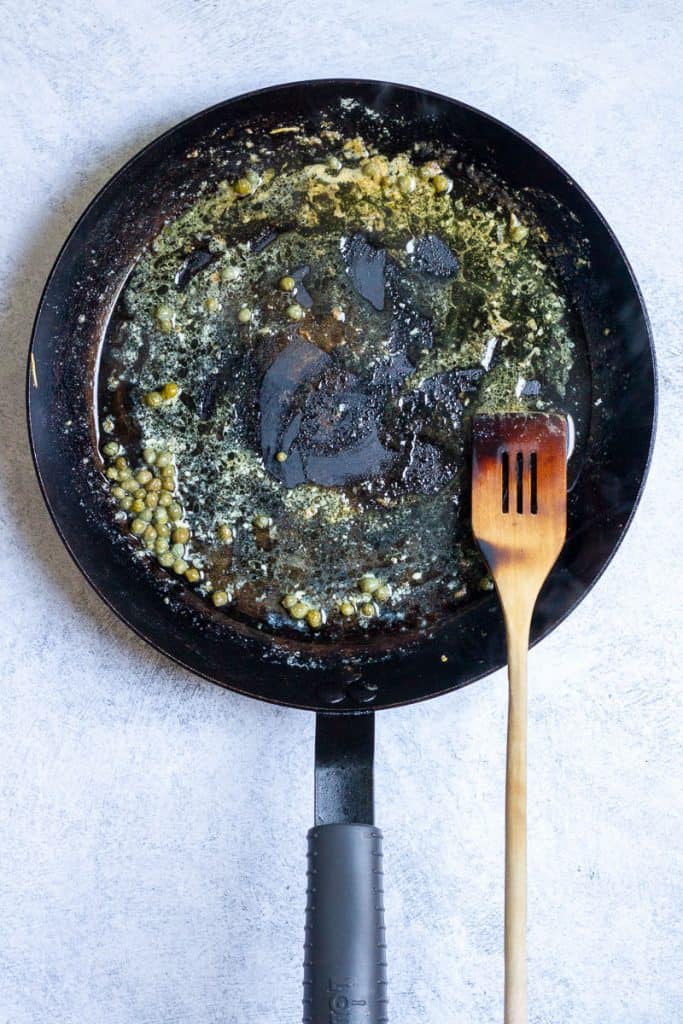
Add your preferred herbs to the sauce.
You're ready to serve! Pour the pan sauce over the salmon, and sprinkle with more herbs as desired.
Enjoy these pan-seared salmon steaks alongside a helping of blue cheese mashed potatoes and a roasted brussels sprouts salad. And a cherry clafoutis might be just what you need for dessert!
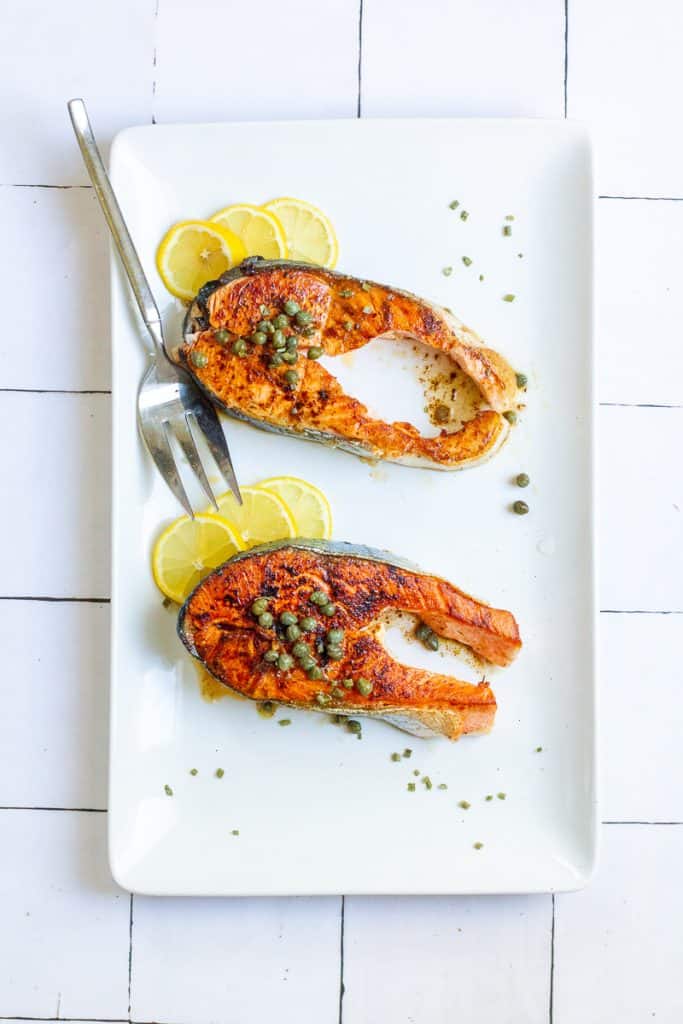
Pan-Seared Salmon Steaks
Ingredients
- 2 salmon steaks (~16 ounces), deboned, pin bones removed. See "Rolled Salmon Steaks" in recipe notes
- pinch salt, pepper
- ⅛ teaspoon paprika (optional)
- 1 tablespoon olive oil
- 1 tablespoon butter or clarified butter Or use extra olive oil
- 1 lemon, juiced
- 1 tablespoon capers
- Handful fresh herbs (parsley, chives, basil, cilantro etc)
Instructions
- Pat salmon dry. Sprinkle fillets on both sides with salt, pepper and the paprika (if using).Allow fillets to rest at room temperature for about 15 minutes. (Cold salmon is more difficult to sear.)

- Add olive oil and butter to a heavy pan. Melt butter over medium heat. Place the steaks in the pan and cook 3-4 minutes, depending on the thickness of the steaks. As the salmon cooks, the flesh will begin to turn opaque from the bottom up. When the fish has cooked halfway through, it's ready to flip.Avoid touching the fish until the fish is ready to flip.
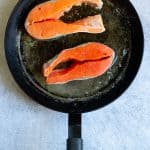
- Use a thin metal spatula to test the fish. If you can slide the spatula under the fish without the fish sticking to the pan, it's ready to flip. If the fillets won't release, give them another 30 seconds. They'll release when they've finished cooking.Cook fish another 2-4 minutes until done. Timing will depend on the thickness of the steak. (Watch the center of the steaks to see when the fish is done cooking. It's finished as soon as there are no more translucent patches and it's fully opaque.)

- Transfer the fish to plates, leaving the excess butter in the pan. Cover fish to keep warm, or set steaks in a 200ºF oven.Reduce heat to medium-low. Add the lemon juice and capers to the pan, stir with a wooden spoon, and allow the juice to reduce for about a minute. Add half the herbs and turn off the heat. Serve fish hot with pan sauce and remaining herbs.
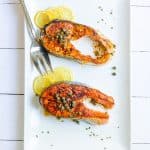
Notes
- To roll, trim out the spine bones along the inner section of both belly flaps. Cut the bone out by slicing near the skin and remove it.
- Next, cut away the skin halfway up both belly flaps, fold the belly flaps in, wrap the skin around the salmon roll and tie the medallion with cooking twine.
- If you roll the steaks, it's best to have a digital meat thermometer available since it's difficult to observe (by sight) if the fish has cooked through. Cook salmon to an internal temperature of approximately 125° Fahrenheit.
- Make sure to pat the fish dry.
- Make sure to let the fish rest at room temperature for about 15 minutes. Cold fish tends to stick to the pan.
- Test the fish with a thin metal spatula before attempting to flip. If the fish doesn't release, give it another 30 seconds and try again.
- If your butter and oil begin to smoke, lower the heat slightly.
- Have all your ingredients prepared before beginning so that you can watch the fish carefully while it cooks. I prep everything while the fish rests at room temperature.


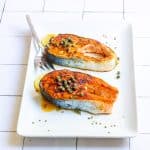


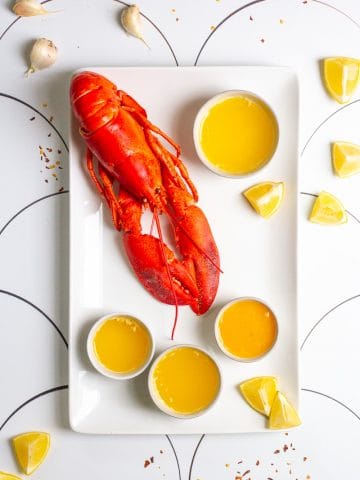
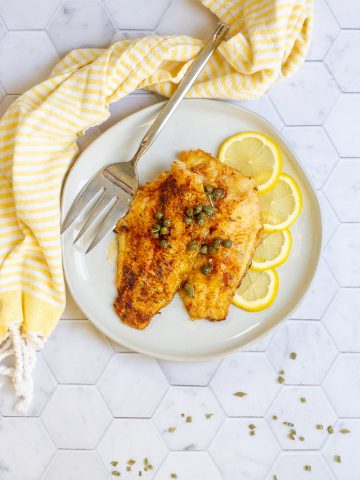
Leave a Comment: